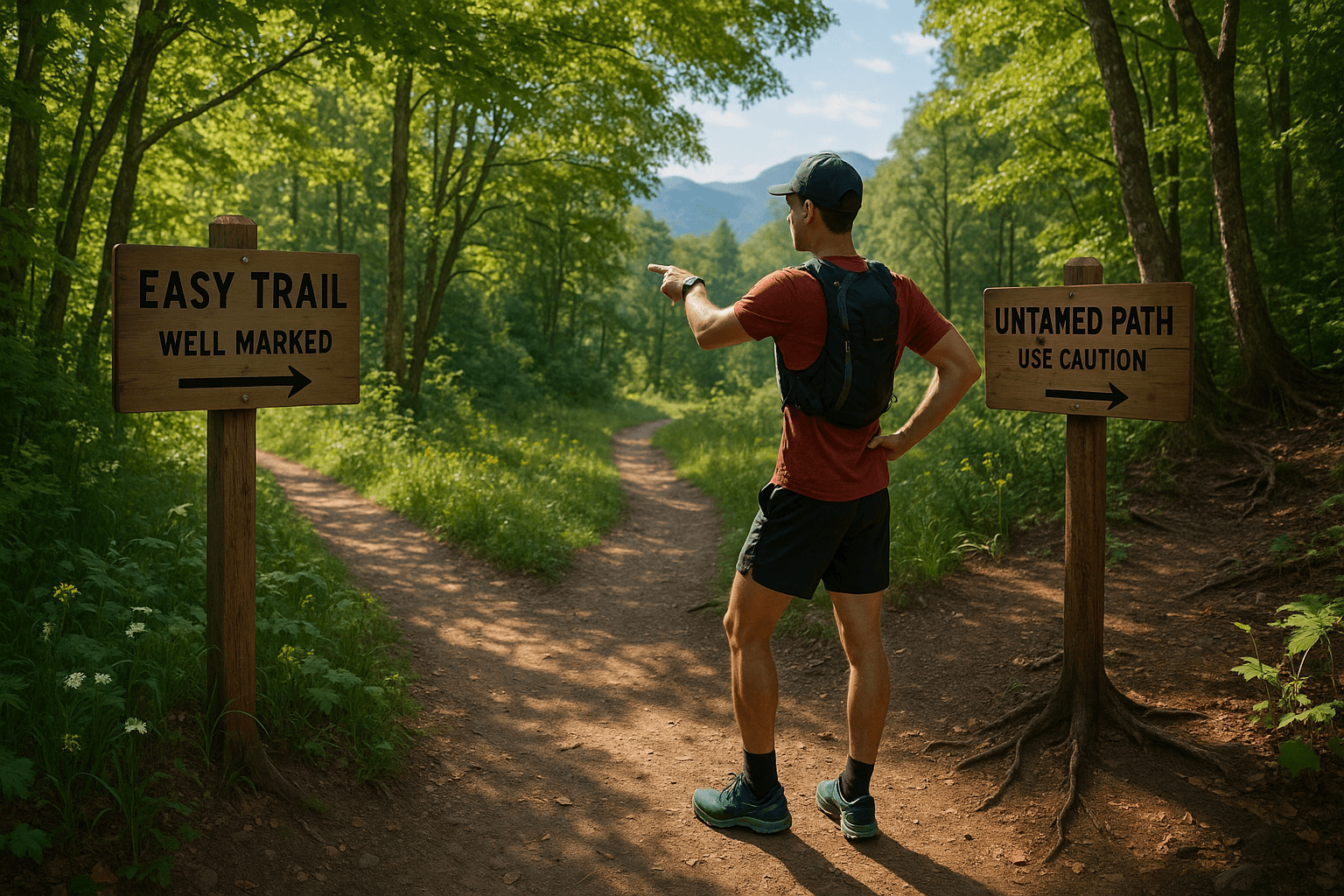The MAF test isn’t some fancy lab protocol — it’s a down-to-earth check-in that tells you straight up: Am I getting faster while running easy? That’s the real game here.
You’re not guessing. You’re measuring.
It’s a simple tool, and if you do it consistently, it becomes your secret weapon. No hype. Just raw proof that your aerobic base is getting stronger.
How to Do the MAF Test Like a Pro (Without Overcomplicating It)
1. Pick a Good Day
Choose a day when you’re not dragging. Well-rested, no heavy leg hangover from yesterday’s run.
Try to keep conditions the same every time — same course, same time of day, similar weather. A track works great. So does a flat path or a treadmill with 0% incline. Keep it repeatable.
2. Warm Up Like You Mean It
Don’t skip this. Jog for about 15 minutes, keeping your heart rate roughly 10 beats below your MAF max.
You want to get loose, get warm, and get your body prepped — not jump straight in cold. I usually toss in a few short pickups just to get the blood moving, but nothing hard.
3. Run 3–5 Miles at Your MAF Heart Rate
Classic MAF test is 3 to 5 miles (or around 5K), all run at your MAF heart rate.
For newer runners, 3 miles is solid. If you’ve been doing this a while, go for 5. On a track, that’s 12 laps for 3 miles. On a treadmill, just stick to the distance readout.
4. Lock in Your HR — No Surging
Try to stay right at your target MAF HR (say, 140 bpm). Expect a bit of drift, but don’t let it spike.
You’re not racing — you’re holding steady.
5. Record Your Mile Splits
Write down your pace for each mile (or km). Expect each mile to be slightly slower than the last. That’s normal.
Fatigue and heart rate drift make that happen.
6. Cool Down Easy
Jog it out for 10–15 minutes. Don’t skip the cooldown.
It helps you recover better and stay in one piece.
What the Numbers Might Look Like
Let’s say your test goes like this:
- Mile 1 @ 140 bpm – 10:20
- Mile 2 @ 140 bpm – 10:40
- Mile 3 @ 140 bpm – 11:00
The actual numbers don’t matter as much as how they change over time.
One month later:
- Mile 1 – 9:50
- Mile 2 – 10:10
- Mile 3 – 10:30
Boom. That’s progress — a solid 30-second-per-mile improvement. And it came from running easy. That’s the power of MAF.
My First MAF Test (AKA: Humble Pie)
When I first tested, I ran a 5K at around 142 bpm. My average pace? About 10:45 per mile. Felt slow as molasses.
Two months later, I was cruising at 10:00. Four months in? Around 9:20 per mile. All at the same heart rate.
That was the proof I needed. No fancy gadgets, no flashy workouts — just steady effort, and results started stacking up. It was like watching my body quietly level up.
It’s Not Just About Improvement — It’s a Warning System Too
Let’s say your MAF pace suddenly tanks. You’re usually doing 8:30s at 140 bpm, but now you’re pushing 9:30 for the same effort?
That’s a red flag. Could be overtraining. Could be poor sleep. Could be a cold coming on. Pay attention. The MAF test gives you more than just progress — it tells you when to ease off too.
Keep Your Conditions Consistent
If one test was on a cool 50°F morning, and the next in 80°F heat with Bali-style humidity? That’ll mess up the numbers.
Same goes if you crushed hill repeats yesterday or slept like crap. Plan your test after a rest day or easy run. Keep the variables low so the data is real.
Bonus Tip: Flip the Script
Don’t want to run by distance? No problem. You can run for time — say 30 minutes at MAF HR — and track how far you get. Just keep the setup consistent test to test.
Why I’m All-In on the MAF Test
Dr. Maffetone made this the cornerstone of his method for a reason. It gives you hard numbers — pace and heart rate — that track real change. You don’t need a lab. Just a watch, a plan, and patience.
And when you do see gains, it lights a fire in you. You realize all those slow runs were doing work — rebuilding your aerobic engine, improving fat metabolism, growing capillaries and mitochondria. Stuff you don’t always feel, but you’ll sure see it when the paces drop.
I’ve had coaching clients go from 12:00 miles at MAF to low 9s in a few months. That’s no accident. That’s smart, consistent work paying off.
The Tough Parts of MAF Training — And How to Push Through
Let me be real with you: I love MAF training, but man, it can mess with your head. Especially early on. You go from feeling like a runner to feeling like you’re just out for a stroll.
Here’s a breakdown of what makes MAF tough — and what’s helped me and other runners stick with it.
Slowing Down Feels Like a Slap to the Ego
If you’ve been running for a while, MAF will feel like putting on the brakes hard. When I first started, it felt like my watch was trolling me.
I was shuffling along, barely sweating, wondering, “Is this even running?” I missed the grind, the sweat, the rush. I felt like I was jogging in reverse. But over time, I realized that slow running was its own test — of patience, of self-control, of trusting a process.
One trick that helped: treat it like mindful practice. Listen to podcasts, find scenic loops, or run with a buddy who’s down to go easy. And remind yourself — it’s temporary. As your aerobic engine improves, so does your pace.
I also sneak in short strides every now and then (think 15-second form poppers). They don’t wreck your base, but they wake up your legs. Just don’t turn them into workouts.
Progress Feels Invisible at First
We all want results fast. But with MAF? You might get slower before you get faster.
My second week of training, I dropped 15 seconds per mile at the same heart rate. I panicked. But a more experienced runner told me: chill, wait a month, then reassess.
Sure enough, I started noticing little wins: smoother runs, more energy, and eventually, quicker splits.
Want to stay sane? Do a MAF test once a month. Track your pace at a set heart rate over a consistent route. That data is gold. It shows progress you might not feel.
And remember: progress isn’t a straight line. Weather, sleep, stress — they all mess with heart rate. That’s part of the ride.
Feeling Like You’re Not Training “Hard Enough”
This one hits your pride. You finish a run and think, “That didn’t even hurt — did I do anything today?” I’ve been there.
It’s hard to accept that something easy can still build strength. But it does. You’re training smart, not soft. Logging miles that don’t leave you beat up.
I kept a log during my early MAF days. I wasn’t setting records, but I noticed I wasn’t as sore. I bounced back quicker. That’s real progress.
And if your friends think you’ve gone soft, that’s their problem. You’re building quietly. Let your race times do the talking later.
The 180 Formula Isn’t Perfect
MAF’s famous 180 formula (180 minus your age) is a great starting point, but it’s not personalized. Some people can handle a bit more, others need to dial it back.
You’ve got to listen to your body. I’ve had days where 140 bpm felt like a jog in the park, and others where it felt like tempo pace.
If that number feels off week after week, try adjusting by a few beats. But go slow — tweak, test, repeat.
A guy on Reddit nailed it: “Don’t worship the number. Use it as a guardrail.”
It Takes More Time — and It Can Get Boring
MAF means slower runs. Slower runs usually mean longer runs. That’s great if you’ve got the hours.
But if life’s busy, 90-minute jogs might not fit. If you’re strapped for time, know that 30-minute runs still help. Just adjust your expectations.
And to fight the boredom, mix up your routes. Try trails, run by feel, or swap a run for a MAF-paced bike ride.
When I needed a mental reset, I’d hike a volcano or ride along the coast — still aerobic, still progress, but with a change of pace.
MAF Alone Won’t Make You a Speed Demon
Let’s be clear: MAF builds your base. It makes you durable. But at some point, if you want to race fast, you’ll need to bring in some speed.
That doesn’t mean trashing your aerobic work. It means timing your intensity.
Think of MAF as the foundation. Then layer in intervals, tempos, or hill sprints once that base is strong. I’ve seen runners stall when they only do MAF forever. The magic is in knowing when to shift gears.
Heart Rate Can Be a Drama Queen
Heat, humidity, stress, coffee — they all push heart rate up.
Some days, I hit 145 bpm just tying my shoes in Bali’s heat. On those days, I’d slow to a crawl and wonder if I was back at square one. I wasn’t. It was just life.
Learn to read the room. High HR? Cut the run short or go even easier.
MAF teaches you to pay attention — to how you sleep, eat, recover. It’s like a mirror for your habits.
Final Thought
MAF isn’t flashy. It doesn’t stroke your ego. It doesn’t promise quick wins. But it teaches you to train with patience, to build a real engine, and to play the long game.
I tell my athletes: MAF is a lesson in delayed gratification. It’s about sticking with the plan even when it feels boring, slow, or pointless.
Because behind that slow pace is a runner getting smarter, stronger, and more consistent.
So tell me — what’s been your biggest struggle with MAF training? What’s helped you stay the course? Let’s trade stories.




